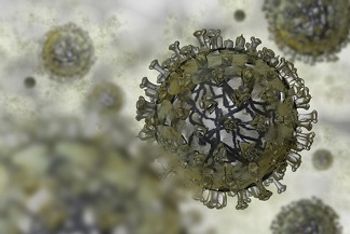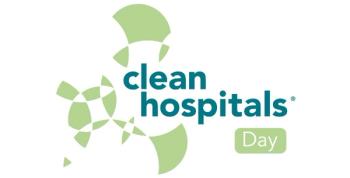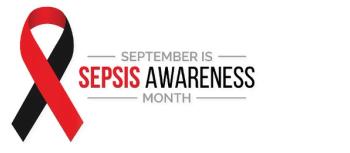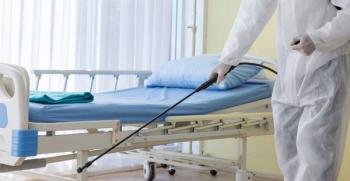
New study shows home infusion therapy staff may have significant barriers to infection-surveillance training, and this could be leading to higher infection rates.

New study shows home infusion therapy staff may have significant barriers to infection-surveillance training, and this could be leading to higher infection rates.

Take 5 minutes to catch up on Infection Control Today®’s highlights for the week ending January 6, 2023.

In this second installment of 3, Infection Control Today® continues a personal story of how sepsis can enter central lines and how it affects the entire family.

In this first installment of 3, Infection Control Today® presents a personal story of how sepsis can enter central lines, and how it affects the entire family.

Take 5 minutes to catch up on Infection Control Today®’s highlights for the week ending December 2, 2022

Reluctance to receive the influenza vaccine continues despite years-long campaigns to increase vaccination rates. William Schaffner, MD, speaks to ICT® about how health care workers can respond to the most common questions and assure of the vaccine’s safety and efficacy.

Take 5 minutes to catch up on Infection Control Today’s highlights for the week ending November 25, 2022.

Take 5 minutes to catch up on Infection Control Today’s highlights for the week ending November 11, 2022.

While sequencing-based diagnostics have been used since the 1970s, only recently has the technology been used for infectious diseases.

From safety to infection control, facial recognition in health care facilities is a new tool to keep both patients and staff safe from workplace violence.

Pierre Parneix, MD, speaks with Infection Control Today® on his work as the president of the French Society for Hospital Hygiene, his work with the Clean Hospitals, and his outlook on France’s fight against infectious disease in the near future.

Environmental hygiene issues are rampant throughout every country in the world. From not enough resources to too few personnel, hospitals face difficulties that put patients at risk.

Take 5 minutes to catch up on Infection Control Today’s highlights for the week ending October 14.

An innovative way to assess hand hygiene technique has been proposed in a new study by well-known infectious disease specialist, John Boyce, MD.

Didier Pittet, MD, MS, CBE, a renowned epidemiologist, joins ICT® ahead of the upcoming Clean Hospitals Day Conference to discuss the biggest challenges that environmental hygiene personnel face.

COVID-19 has not been the only pathogen that has been spreading the last few years. Candida auris has taken a hold, not only in the United States but around the world. Here are the details and how environmental hygiene practices can protect patients in a health care setting.

A sepsis diagnosis is expensive and deadly, and early detection and treatment are key to saving lives. However, sepsis is not always easy to diagnose early, so a new advanced analytics surveillance tool can increase the chances of an improved outcome.

Take 5 minutes to catch up on Infection Control Today’s highlights for the week ending September 23.

Ambassador Deborah Birx, MD, an American diplomat and infectious disease expert, once again joins Infection Control Today®, this time to talk about President Biden’s recent comment that the pandemic is over, and what can be done to mitigate the circumstances.

Despite studies that show UV-C is effective and safe, some individuals still refuse to believe it, based on experience with or studies based on first generation UV-C technology.

Take 5 minutes to catch up on Infection Control Today’s highlights for the week ending August 19.

Ambassador Deborah Birx said in an exclusive interview with ICT® that there are “extraordinary structural barriers in the US to access” medical care. Individuals may have insurance, but they cannot access care.

Infection Control Today® asked Matt Pullen, MD, the questions from our readers about the NY polio patient.

Standardizing disinfectant wipes across multiple facilities requires comparing active ingredients, kill claims, and dwell times.

Bernadette Mazurek Melnyk, PhD, and her colleagues examined how COVID-19 affected infection preventionists’ mental and physical health, and in an exclusive interview, she discusses how facilities and IPs themselves can mitigate burnout.

The report addresses how the US’s decisions on the pandemic generally increased antimicrobial resistance, and the Centers for Disease Control and Prevention (CDC) recommendations for the future.

A recent study by NYU Langone investigators determined that disinfecting high-touch surfaces within patient rooms with NaDCC via wipes and electrostatic sprayers yielded lower mean bacteria colony counts.

The 50-year-old Association for Professionals and Infection Control and Epidemiology (APIC) gives many tools to aid infection preventionists at any stage of their career with education, networking, and an annual conference.

Take 5 minutes to catch up on Infection Control Today’s highlights for the week ending June 24.

Investigators look for and find MRSA and C difficil widespread on floors, especially in patient rooms, and MRSA inside NICU isolette beds.